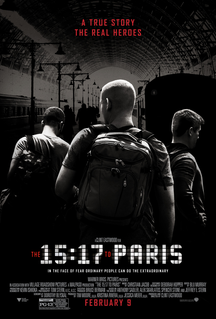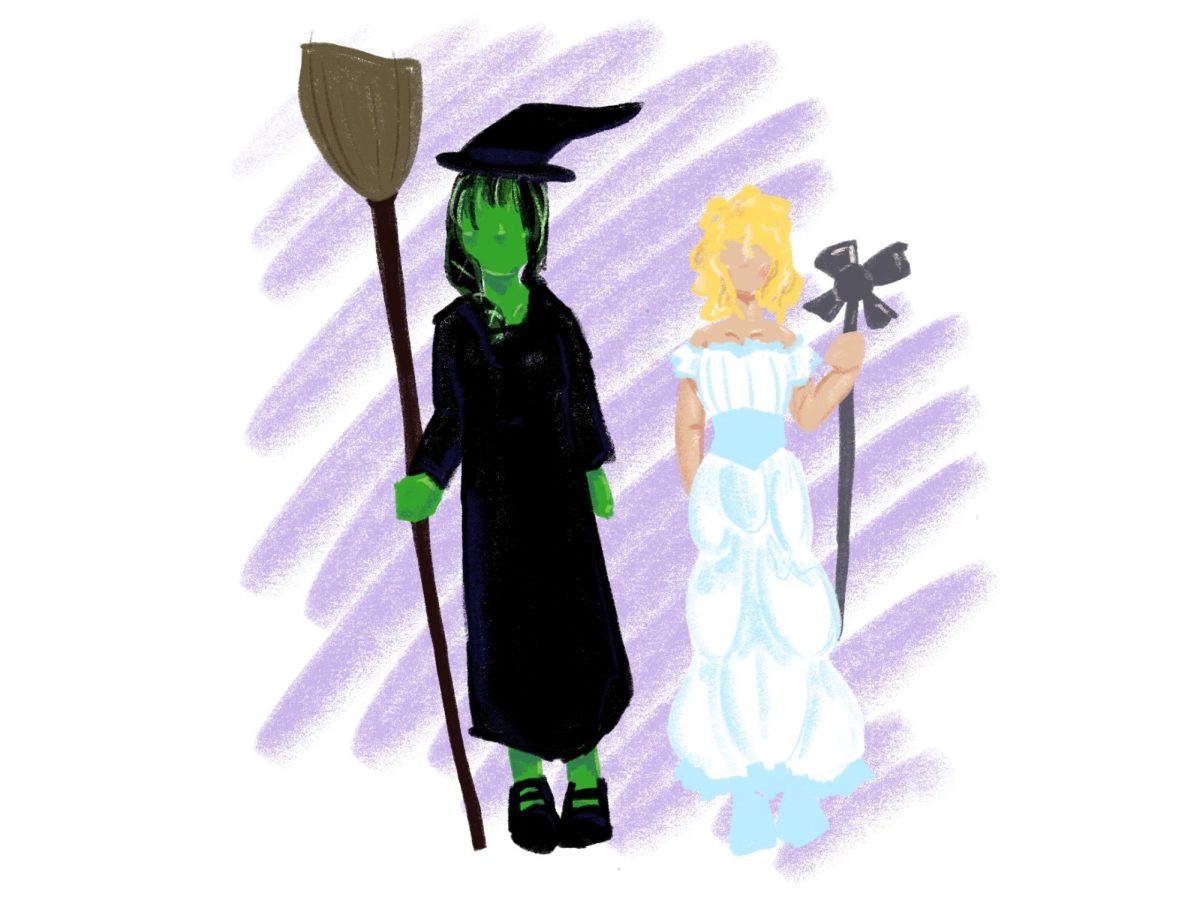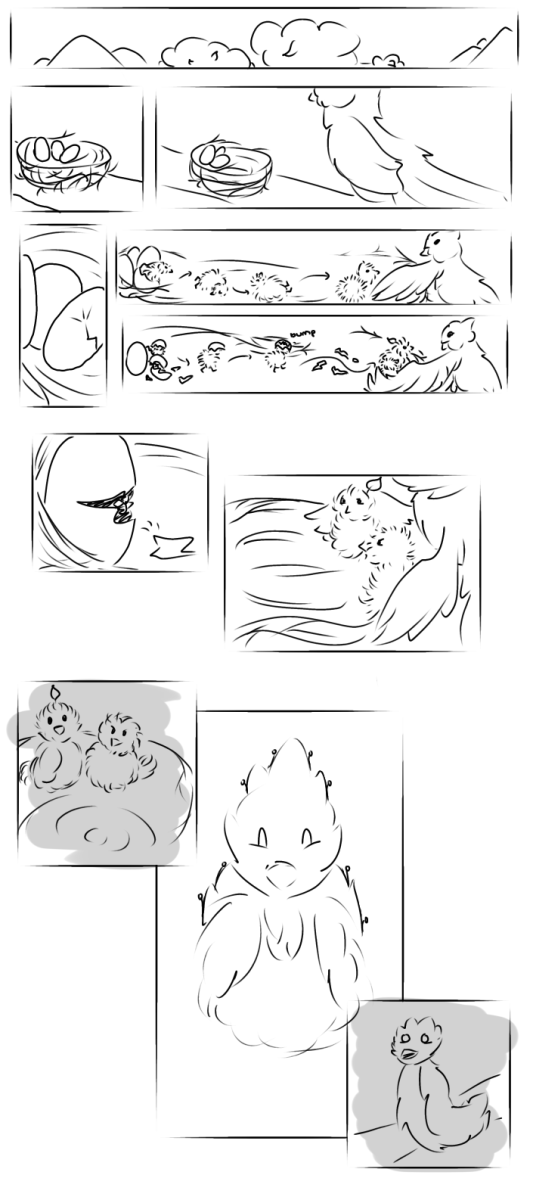‘The 15:17 to Paris’ – a thorough review
“You ever feel like life is catapulting you toward something, some greater purpose?” -Spencer Stone, ‘The 15:17 to Paris’
September 14, 2018

Clint Eastwood’s “The 15:17 to Paris”is polarizing, and rightfully so. It has been bashed by critics, earning only 24% positive reviews on the popular review aggregator Rotten Tomatoes—Eastwood proves with this film that he is still the aesthete that directed films like “Bird”(1988) and “Hereafter” (2010), but compared to his earlier work, this film is noticeably clunky. Some of the dialogue is bizarre, and the acting is certainly not up to par for a $30 million Hollywood production. Despite the generally negative response that the film has received, fans of Eastwood’s earlier works stand by it; why? Could it be because of Eastwood’s previously demonstrated nuance and self-awareness in works such as “White Hunter, Black Heart”(1990)? Are those that support this film simply being facetious? Or is there truly something beyond the surface in “The 15:17 to Paris“?
Within the first few minutes, Eastwood’s frame of mind for “The 15:17 to Paris” is clear. Within only two scenes, the audience sees a confluence of the two sides of Eastwood at this point in his technical career: the classical Eastwood, who values traditional, technical filmmaking and the experimental Eastwood that reaches out of his comfort zone (in this case, somewhat unsuccessfully).
In the opening shot, the audience follows a terrorist as he boards the titular train. No dialogue is used for this sequence, only a montage and ominous music. It is a scene that screams of being made by a classical filmmaker, one that appreciates the value of cinema’s roots. Although there is merit to the changing form of cinema, those that appreciate its roots are to be valued nonetheless, and Eastwood is one of them.
From there, the film fades into the title card and reopens to the three protagonists, Stone, Sadler and Skarlatos, driving in a convertible with the top down. Sadler narrates, “My name is Anthony Sadler. You’re probably wondering why a brother like me is hanging out with these two crackers. But trust me, they’re my two closest friends.” This scene is clunky and appears out of touch, which is no surprise considering the fact that Eastwood turned 88 this year.
As far as the film’s plot, it is kept relatively simple, and according to those involved in the incident that the film is based on, it is an honest depiction of the events and characters. The film tracks the development of three protagonists, including their troubles with grades, being bullied, behavior and family relationships. Sadler’s family is never shown, but Stone and Skarlatos both live with single mothers who are conservative and religious.
In an early scene, the principal of Stone and Skarlatos’ middle school suggests to their mothers that students with single mothers tend to have developmental issues, to which Skarlatos’ mother replies, “My God is bigger than your statistics.”
The boys play war games with BB guns after school, ask their history teacher for old World War II battle plans and display war movie posters in their rooms, including “Full Metal Jacket “(1987) and Eastwood’s own “Letters From Iwo Jima” (2007).
After learning of the boys’ childhoods, the audience discovers how they entered their professional lives. While working at a Jamba Juice, Stone meets a U.S. Marine who describes various military careers to him. Initially, Stone has his heart set on being in the pararescue. However, he is disqualified for this position because of his lack of depth perception, he ends up with a cushy security job in Portugal.
Conversely, Skarlatos joins the military and travels to Afghanistan for his first tour. Unfortunately, by the time he reaches Afghanistan, the conflict there is wrapping up. He describes himself as a “mall cop.” Unlike his companions, Sadler does not join the armed forces, instead opting to join the workforce and continue his education. When the three enter this point in their lives, they decide to reunite for a backpacking trip through Europe. Stone, Skarlatos and Sadler travel through Italy, Germany and Amsterdam, seeing the sights and reminiscing on the friendship of their youth. The story comes to its head on the eponymous train to Paris, when the trio use their military training and life experience, as tracked throughout the film, to stop a terrorist attack from being carried out.
The fact that the film is set in 2005 qualifies this, but a glaring aspect of “The 15:17 to Paris”is that it is a futile attempt by a fading filmmaker attempting to connect to a younger generation. For example, a featured aspect of Sadler’s character is that he uses a selfie stick, the maligned tech tool that was very much an of-its-era gadget. Where many directors would avoid this, Eastwood embraces it with open arms, for better or for worse. There are several instances in which the selfie stick is mentioned, including when Stone tells Sadler, “I gotta give it to you, man, the selfie stick is where it’s at.”
Unfortunately, this aspect of the film extends beyond mere dialogue; Eastwood tries throughout the film to capture the colloquialisms of a generation that is alien to him. Essentially, the characters act like perceptions of themselves rather than real people, which falters the film from the point of realism that it boasts.
Eastwood is one of Hollywood’s quintessential patriots, and in recent years, his fascination with American heroism has shone through more than ever. Aspects of his past three movies – “American Sniper “(2014), “Sully”(2016) and “The 15:17 to Paris”(2018) —have focused on immortalized figures— their acts of bravery, the implications of their actions, and how these figures are molded by American culture. However, it is foolish to write this off as nationalist nonsense.
Eastwood is nuanced in his depiction of the flaws in American culture regarding these individuals. He avoids romanticizing the protagonistic trio of “The 15:17 to Paris,” which is the key to how his use of realism pays off. Eastwood shows how they caused trouble in their youth, how they partied, how they are human beings with traditional human flaws. He tells the audience that these men should be praised for their bravery in the face of danger, but he also tells the audience that the protagonists are real people that should not be held to too high of a standard.
Perhaps the most often discussed aspect of the film is Eastwood’s decision to not cast professional actors for the starring roles, instead using Stone, Sadler and Skarlatos themselves. Some have interpreted this directorial decision as a reference to the cinéma vérité(French for “cinema of truth”) movement, which fundamentally applies the idea of the camera as an observer. Essentially, it is a subgenre that blurs the line between documentary and fiction.
As far as its canonical standing, the influence of the cinéma vérité subgenre can be found anywhere from high-brow cinema like the work of Abbas Kiarostami, low-brow genre fare like “Project X” (2012), or somewhere in between like the work of Richard Linklater.
Some have criticized the performances of Stone, Sadler and Skarlatos. This criticism makes sense as they are not trained actors, therefore leaving something to be desired in terms of their line delivery. However, when considering Eastwood’s intent with this directorial decision, criticizing the film’s acting becomes reductive. He intends to portray the men who performed this act of bravery in an observational sense, so suggesting that the use of trained actors would improve the film is to devalue not only a major thematic point of the film, but to overly mystify the protagonists’ actions in a harmful way.
Eastwood’s spiritual ideologies, while somewhat elusive, are accurately represented in this work. Eastwood has stated that although he finds value in religious practices, he doesn’t believe in God. While promoting his film “Hereafter” (2010), Eastwood said of his faith, “I was always respectful of people who were deeply religious because I always felt that if they gave themselves to it, then it had to be important to them. But if you can go through life without it, that’s OK, too. It’s whatever suits you. I do believe in self-help” (Chicago Tribune).
In “The 15:17 to Paris,” Eastwood proposes the idea that there is a greater purpose for humanity or some kind of grand scheme of fate. There are instances throughout the film in which people acknowledge that some kind of supreme being exists. In a scene shortly before Skarlatos departs for Germany, his mother states, “God spoke to me and he told me that something very exciting is going to happen. And I just, I can’t wait to see what he has in store for you.”
Eastwood emphasizes with this film that those who commit secular acts hold the capability to contribute positively to a godly grand scheme. In a Berlin bar, a drunken man encourages the protagonists to stop in Amsterdam because he was able to find good drugs and beautiful women there. If not for these secular attractions, Stone, Skarlatos and Sadler would never have been in a position to commit the act of bravery that changed their lives.
Although Eastwood’s experimentation in “The 15:17 to Paris” does not fully pay off, it is a nuanced work, and the purest translation of Eastwood’s ideals that have been put to film. The movie reflects honestly on the post-9/11 tension of 2005 from the perspective of 2018. You may have to do some digging to find the full value of “The 15:17 to Paris,”but if you can find it, it is wholly worthwhile.




























